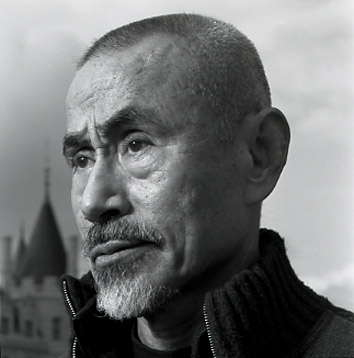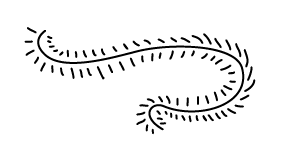 Currently i am reading this book to get into the art of acting. I am seeing this not only as a way to prepare myself for the acting classes but furthermore to get a feeling for classic story telling styles.
Currently i am reading this book to get into the art of acting. I am seeing this not only as a way to prepare myself for the acting classes but furthermore to get a feeling for classic story telling styles.left: portrait Yoshi Oida (copyright David Balicki )
INTRODUCTION
Inside the body lies a fire just like the one under the earth's crust; powerful and hot. Sometimes it is visible sometimes it is not.
"...if the actor can find a way to contact the fire that exists inside the body, the audience can share that energy."
"We - the actors - need to be like a vulcano, able to let our energy erupt into the world"
Complexes and blocks can prevent the fire to come out. Reasons for this can be intellectual or emotional barriers ("this is not right" or fear/pressure).
=> regular body work can unblock the inner energy
Stretching is good, but avoid relaxing body work, as becoming soft and sleepy ain't no use for actual performance.
Hard body work like gym or dance leaves you with a feeling of tiredness, also not good before performing.
(Read "the invisible actor" for body work suggestions. Yoga might be good? KH)
ANUS
Keeping the coccyx lifted like a bird enhances the basic energy on stage.
Eg. dog tail goes up when happy or ready to fight and goes under when unhappy.
This is technique used in Noh theatre.

NOH
3 major classical styles of classic japanese theatre.
Noh, Kabuki and Bunraku, all created before the 18th century.
These are still performed on stage today by specific families, although non-family members can take classes as amateurs.
Noh - around 14th century - codified by Motokiyo Zeami, a great master, is an empty stage, no set and only a few props to suggest whatever reality is being evoked, on the other hand costumes are gorgeous.
There are two distinct sub-forms:
Noh and Kyogen.

The sub-form Noh is a highly stylized masked theatre, with ritualistic dance movements, musical accompaniment (drums and flute), a chorus and heigtened use of the voice on the part of the actors. Its themes tend to be melancholy, concerned with longing, loss, and the uncertainty of life and love. The various stories are arranged into five categories: Gods, Warriors, Unfortunate Women, Madwomen and Demons. Little expressed emotion, or direct conflict, and few spectacular effects.
 The sub-form Kyogen is a broad comic style involving elements of farce. The stories are down to earth, with tales of stupid gods, ugly wives, and (very typically) a master and two cunning servants. In Kyogen the language is more naturalistic, as is the acting style.
The sub-form Kyogen is a broad comic style involving elements of farce. The stories are down to earth, with tales of stupid gods, ugly wives, and (very typically) a master and two cunning servants. In Kyogen the language is more naturalistic, as is the acting style.9 plays of 5 Noh and 4 Kyogen plays constitute the Noh theatre switching from comedy to tragedy in alternance.
Less frequently performed today.
No overlap between the training and the repertoire of the actors from the two classic, complementary sub-forms.
Main role actors are played by Noh actors for Noh plays and Kyogen actors for Kyogen plays.
ANUS and NOH
One specific technique for singing focuses on the very base of the spine.
When you go up in pitch, you tighten the anus.
You imagine the voice travels up the spinal column as the pitch goes higher, going down you imagine the sound moving down the front of the body, right down into the belly, similar to ideas in Yoga practice.
Tighten the anus for shouting being angry or moving strongly.
Doing this might give you a little shock to the top of your head, as energy passes between the two ends of the spine.
Shouting becomes easier as tightening the anus takes your attention off making the loud sound thus the neck does not become tight causing a strangled voice.
HARA
In Japanese theatre actors mus connect to the hara to move, cry or scream in rage from the hara. Hara can be translated to "belly" both outside and inside.
In Noh theatre when actors walk, it is the hara that travels forwards and the body follows.
When turning the hara changes direction first, then the feet respond. When they rise, the hara lifts and continues moving upwards, bringing the rest of the body with it.
All actions begin in the hara and the body follows. Moving from the hara makes the movements appear organic.
Showing emotions:
Any emotional state should go down to the hara. Try to connect the emotional feeling downwards to the hara, rather then letting it escape upwards into yelling, arm waving and too much demonstration.
Shoulders:
In real life, when you meet somebody important, or somebody you respect, or you find yourself in a difficult situation mentally or emotionally, or you are afraid or angry, your body responds, resulting in your shoulders going up. On stage the same thing occurs: Excitement or anxiety change your body, and your shoulders go up.
As a performer you have to be careful bringing the shoulders down. When up you look frightened and you can damage your voice.
Rather then thinking about being "relaxed" try to keep your shoulders down.
 Inspiration:
Inspiration:- Masks, decorative clothing
- hara as a figurative symbol, for individuals or groups
- anus exercise and sing/ scream
- tragedy: artificial: stage
- comedy: reality: interviews
Article about contemporary Noh
Takeshi Kawamura’s Aoi/Komachi
Japan Society
New York, NY
March 22, 2007
Video links to Noh
Demons
Noh Play
Theatre article summary

No comments:
Post a Comment